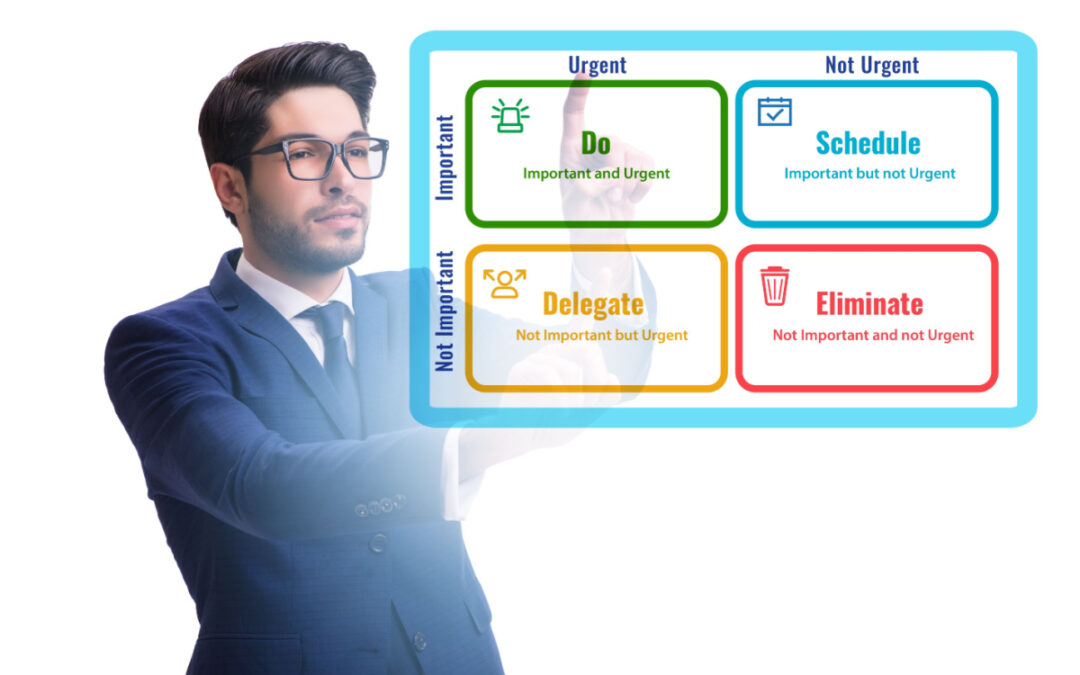Introduction
As an American small business owner, you’re no stranger to the overwhelming list of tasks that demand your attention. The Eisenhower Matrix, a time management tool, might just be the solution you’ve been seeking. Let’s dive into its origins, benefits, and practical applications.
History and Origin: Where Did the Eisenhower Matrix Come From?
Dwight D. Eisenhower, the 34th President of the United States, was not only a statesman but also a master of time management. He once said, “What is important is seldom urgent, and what is urgent is seldom important.” This philosophy led to the creation of the Eisenhower Matrix, a tool that categorizes tasks based on their urgency and importance.
Understanding the Matrix: What Are Its Components?
Quadrant I: Urgent and Important
These are the fire-fighting tasks. They’re immediate and critical. For a business owner, it could be addressing a customer complaint or dealing with a sudden equipment breakdown.
Quadrant II: Not Urgent but Important
This is where strategic planning lies. Tasks here, like building relationships or long-term planning, are essential for growth but don’t demand immediate attention.
Quadrant III: Urgent but Not Important
Ever jumped on a call only to realize it could’ve been an email? That’s this quadrant. These tasks seem pressing but don’t significantly impact your business’s bottom line.
Quadrant IV: Not Urgent and Not Important
Scrolling through social media might fall here. These are tasks that, in the grand scheme of things, offer little to no value.
Benefits of Using the Eisenhower Matrix: Why Should Small Business Owners Care?
- Improved Time Management: Allocate time effectively and ensure that crucial tasks get the attention they deserve.
- Reduced Stress: By categorizing tasks, you can tackle them systematically, reducing the overwhelm.
- Enhanced Focus: By understanding what truly matters, you can channel your energy efficiently.
- Better Work-Life Balance: Efficient task management means more time for yourself and your loved ones.
Practical Steps to Implement the Matrix: How Can You Make It Work for You?
- Categorize Your Tasks: Start by listing down everything you need to do and slot them into the appropriate quadrant.
- Prioritize: Focus on Quadrant I tasks first, then move to Quadrant II. Try to delegate or limit time on Quadrant III tasks and eliminate Quadrant IV tasks when possible.
- Use Tools: There are several apps and tools designed to help you implement the Eisenhower Matrix. Find one that suits your needs.
Common Mistakes and Their Solutions: Navigating the Pitfalls
- Overloading Quadrant I: Constantly being in crisis mode is exhausting. If everything seems urgent and important, it’s time to re-evaluate.
- Neglecting Quadrant II: Remember, these are the tasks that drive growth. Make time for them.
- Misjudging Urgency: It’s easy to mistake something urgent for something important. Regularly review your tasks to ensure they’re in the right quadrant.
Conclusion: Embracing the Eisenhower Matrix for Business Success
The Eisenhower Matrix isn’t just a tool; it’s a mindset. By understanding the difference between urgency and importance, American small business owners can navigate the challenges of entrepreneurship with clarity and confidence. Give it a try, and you might just find that it revolutionizes the way you work.
—
Feeling overwhelmed with your business tasks? Discover how “The Pomodoro Technique: A Real Lifesaver for Busy Business Owners Like Us” can revolutionize your workflow. Read the article now. Inspired to optimize further? Schedule your 15-minute call for free to find out how we can support you!


Recent Comments